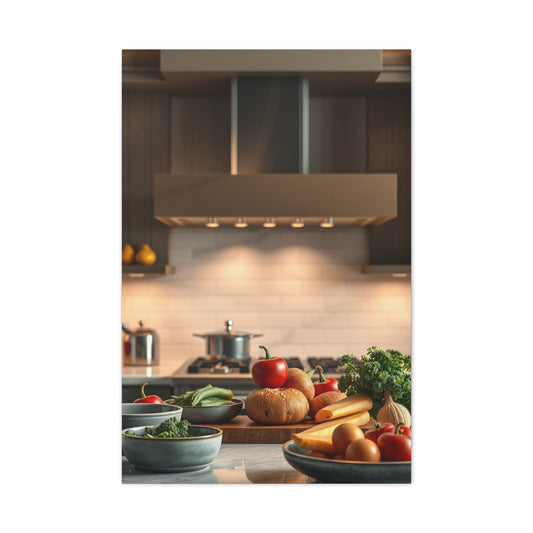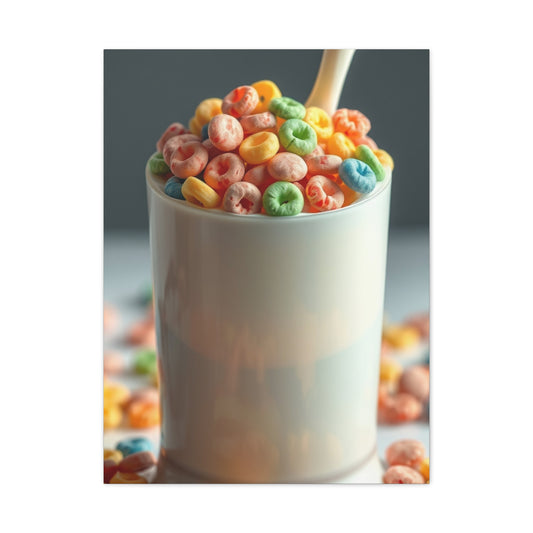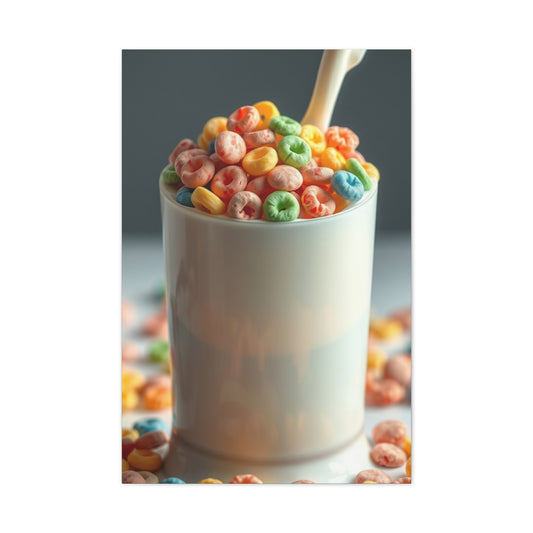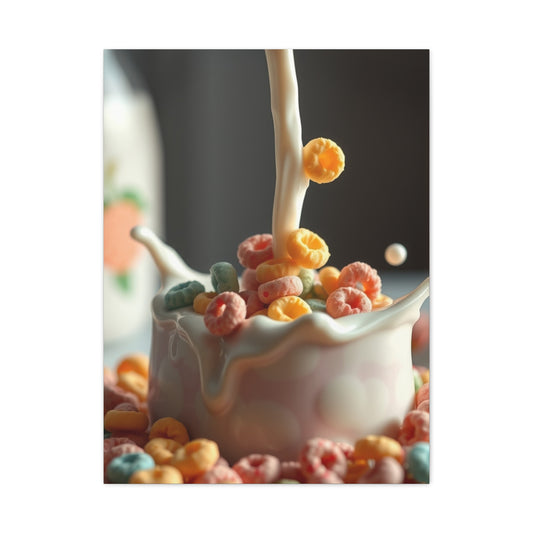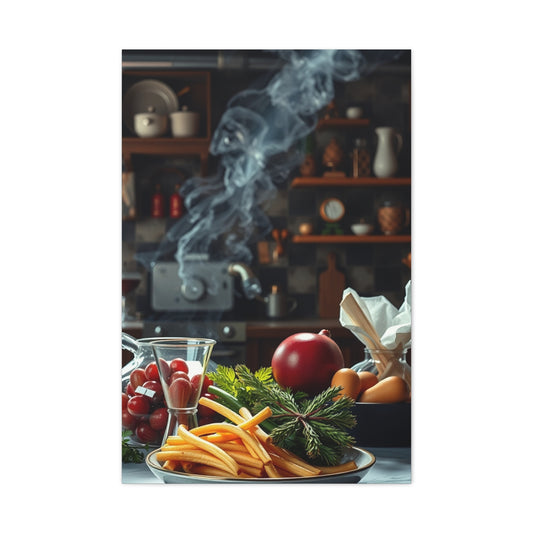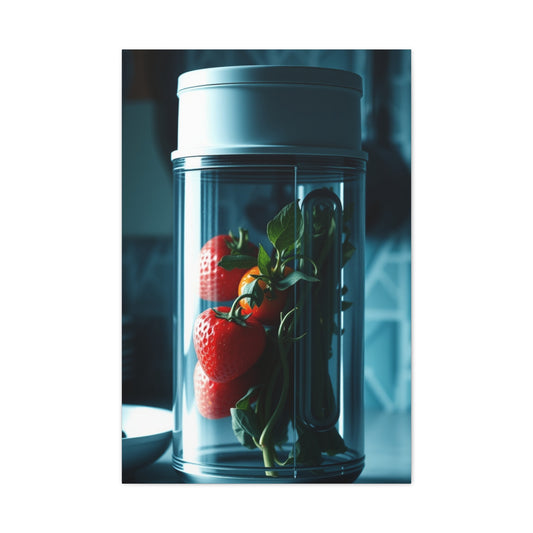Relocating to a new home, whether across town or across the country, is a multifaceted undertaking filled with both excitement and stress. Among the various belongings you'll be packing, transporting, and unpacking, one category demands particular care: wall art. These cherished pieces not only enhance your living space but often hold sentimental or financial value that simply cannot be replaced.
In a world where people are increasingly mobile due to career shifts, lifestyle changes, or economic opportunities, understanding how to move wall art safely has become essential. This comprehensive guide is your ultimate resource for ensuring that your artwork endures the rigors of relocation—arriving at your new home unscathed and ready to grace your walls once again.
Begin with Artwork to Streamline the Packing Process
Among the many tasks involved in relocating to a new home, deciding where to begin can feel overwhelming. It’s common to focus first on large furniture or daily essentials, leaving more decorative items for last. However, when it comes to delicate belongings such as wall art, postponing their packing is a critical error. Choosing to begin your packing journey with wall décor can transform a chaotic process into one that is calm, methodical, and deliberate.
Artwork is unlike any other household possession. It combines fragility with emotional or monetary value, making it particularly susceptible to damage during a move. Paintings, framed photographs, abstract canvases, and mixed media pieces demand attention beyond the usual wrapping and boxing. Their sentimental worth often outweighs their physical size, which is why beginning with art provides a strategic foundation for the rest of your move.
When you take down your wall art at the start, you also create the psychological momentum to move forward. The act symbolizes detachment from the current space and signals a readiness to transition. This shift is especially impactful for renters, as early removal allows time for thorough wall restoration—patching nail holes, painting over scuffs, and restoring a blank canvas for the next occupant. In many rental agreements, failing to return the unit in pristine condition can result in deductions from the security deposit. By addressing your walls sooner rather than later, you enhance your chances of reclaiming your full deposit without last-minute stress.
For homeowners preparing to list their property for sale, depersonalizing the environment is a crucial staging tactic. Art often reflects personal taste and emotional history, and while those elements are meaningful to you, they can be a barrier for prospective buyers trying to envision the home as their own. Stripping away your artwork allows potential buyers to project their preferences onto a neutral palette, increasing your property’s appeal and, possibly, its value.
Protecting Your Artwork from Damage During Pre-Move Activity
Once wall art is removed, it’s no longer at risk of environmental damage during property tours, family gatherings, or pre-move foot traffic. Homes in the process of being shown or packed often experience a higher level of activity. Whether it's movers evaluating spaces, friends helping with boxes, or potential buyers inspecting rooms, your art may be inadvertently brushed, knocked, or even dropped.
Crowded spaces present a minefield of hazards for anything fragile or irreplaceable. A wayward elbow or misjudged pivot while carrying a sofa can lead to cracked glass, dented corners, or punctured canvases. Even if your artwork is hanging high on the wall, vibrations from moving large furniture or the shifting of floorboards can jostle improperly secured pieces. Dismantling your wall art early eliminates this risk and ensures each piece is tucked away safely before the intensity of the move ramps up.
Furthermore, organizing your wall art first allows you to assess the materials you’ll need to protect it. Many people underestimate the specific tools required to pack art correctly: corner protectors, acid-free tissue paper, bubble wrap, custom-sized boxes, and painter’s tape. By beginning with these fragile items, you give yourself ample time to gather premium materials without scrambling to source them during the final chaotic days.
Enhancing Efficiency with a Strategic Packing Sequence
Starting your packing process with wall art doesn’t just offer emotional and logistical advantages—it creates a clear and strategic sequence for the rest of your tasks. Art serves as the decorative layer of your home, not the functional one. Removing it first peels away surface-level aesthetics and uncovers the structural space, making it easier to access and pack other belongings.
Once your walls are bare, you gain physical and visual clarity that helps in organizing furniture, storage units, and daily-use items. Rooms feel less cluttered, and pathways are more open for movement. You can use the freed-up space along walls to temporarily stage boxed items or stack containers before loading them into the truck.
Packing wall art first also helps preserve your memory of where each piece was located. If you plan to hang your art similarly in the new space, taking it down early allows you to photograph each piece in situ and make notes. This visual documentation serves as a guide later when you're recreating gallery walls or thematic displays in the new home.
In addition, this early packing step introduces a level of discipline to the move. Art must be packed gently and systematically, requiring you to slow down and be mindful. This tone often carries into the rest of the move, encouraging careful packing rather than hurried, last-minute stuffing of boxes.
Long-Term Preservation and Safer Transportation Outcomes
Art isn’t just visually fragile—it can also be vulnerable to temperature fluctuations, moisture, and exposure to sunlight during a move. The longer your artwork remains hanging, the more it is subjected to these potential stressors, especially during spring and summer months when humidity levels rise and windows are opened more frequently. If you live in a region with unpredictable weather or are relocating during a seasonal shift, early removal and storage in a climate-controlled space can help preserve the longevity of your pieces.
Transporting artwork safely means more than just wrapping it up. It’s about ensuring the item is handled properly from the moment it leaves the wall to the moment it’s rehung in your new home. By prioritizing your artwork early in the packing timeline, you reduce the likelihood of making rushed decisions about how to store or carry these items.
You also increase the chances that your art will be among the first items unpacked. As such, it becomes one of the first elements contributing to the sense of familiarity and beauty in your new space. Hanging your favorite canvas or vintage photo collection on day one can immediately make a foreign place feel like home.
If you’re hiring professional movers, having your artwork pre-packed in clearly labeled and protected containers makes their job easier—and faster. Movers are trained to transport delicate items, but they rely on homeowners to have things ready and appropriately prepared. Being proactive in this regard minimizes risk and facilitates a smoother experience.
Use Professional-Grade Packing Materials to Shield Your Art
Moving artwork requires far more than wrapping it in newspaper or tucking it between bed linens. Whether you're relocating across town or cross-country, safeguarding your art pieces involves precision, care, and the right tools. The materials you choose for this task play a crucial role in whether your cherished paintings, prints, or framed photographs arrive intact or sustain irreversible damage.
Ordinary packing supplies such as flimsy boxes, towels, or plastic bags simply cannot provide the kind of protection delicate pieces require. Wall art, particularly framed or glass-covered pieces, is highly susceptible to external impact, vibration, temperature changes, and even moisture. The solution lies in using packing supplies specifically designed for fine art transportation—supplies that shield against abrasion, pressure, and shifting during transit.
Using quality materials is not just a matter of practicality—it's an act of preservation. Many pieces of art are irreplaceable, either due to personal sentiment or actual market value. Proper preparation ensures your investment, whether emotional or financial, remains protected throughout every phase of the move.
Why Specialized Packing Supplies Are Essential for Art Preservation
Packing artwork is an art in itself. It starts with assessing the nature of each piece. Framed items, canvases, mixed media panels, or delicate paper-based art all require slightly different protective measures. The one constant is the need for durable, multi-layered protection.
One of the most effective and widely used materials is bubble wrap. It provides shock absorption and a soft barrier between the artwork and the outer packaging. But not all bubble wrap is equal—choose high-quality, large-bubble types for substantial cushioning. Double wrapping is advisable for frames that include glass, as even small jolts during transport can result in cracks or complete breakage.
To elevate protection even further, use foam sheeting on the front and back of your artwork. Foam not only shields against knocks and scratches but also stabilizes the surface area, preventing warping or denting. This is particularly important for canvases that can sag or stretch under pressure if not properly supported.
One often-overlooked element is corner protection. Frame corners are natural impact points and can easily split, chip, or dent. Reinforced corner guards—typically made of dense cardboard or thick foam—slip over each edge and serve as a buffer zone. They’re simple yet remarkably effective at preventing expensive damage.
For layered protection, consider wrapping each piece in acid-free glassine paper before applying bubble wrap. This technique is particularly valuable when packing fine art prints or original drawings, as the acid-free paper prevents smudging, sticking, or chemical reaction with the surface.
Choosing the Right Boxes and Enclosures for Different Artwork Types
Once your artwork is wrapped securely, the next critical step is selecting the appropriate container. For most pieces, double-walled corrugated art boxes are ideal. These boxes are engineered for durability and are often customizable in height to fit the exact size of the art. This prevents excess movement and internal jostling, which are primary causes of frame damage during a move.
Be cautious with box sizing. A common mistake is placing a small or medium-sized art piece in a box that’s too large. The empty space inside allows for movement, which can be catastrophic in transit. If there's any wiggle room, fill it with soft materials such as crumpled kraft paper, biodegradable packing peanuts, or foam inserts. These fillers absorb vibration and ensure the piece remains centered and stable.
For oversized or uniquely shaped artwork, telescoping boxes are invaluable. These adjustable boxes can be expanded to fit large-scale pieces without compromising protection. You can also use them to create a snug seal by overlapping two fitted sections, minimizing external pressure and exposure.
For high-value or antique pieces, custom wooden crates are considered the gold standard. These crates can be tailored to each artwork’s dimensions and include internal foam padding, shock absorbers, and water-resistant linings. While more expensive, crates offer unmatched durability and peace of mind—especially for long-distance or international moves.
|
Related Catagories: |
|
Great Smoky Mountain National Park Wall Art Canvas Photos Prints |
An additional layer of sophistication can be achieved with archival materials. These are museum-grade supplies made specifically for long-term preservation. From acid-free foam core backing to UV-resistant plastic film, these materials not only protect during a move but also help extend the life of your artwork over time.
Tips for Creating a Secure Packing Environment at Home
Before you begin wrapping and boxing your artwork, create a clean, flat workspace with plenty of room to move around. Avoid carpeted areas, where dust or fibers may cling to wrapping materials, and instead use a table, clean floor, or drop cloth.
Always wash your hands or wear gloves to prevent oils or residue from transferring onto the art surface or materials. This is particularly important when handling prints, pastels, or pieces with visible texture or sheen.
Label each packed artwork clearly and accurately. Write “Fragile – Artwork” on multiple sides of the box, and include directional arrows if the piece should remain upright. If possible, list the contents on the box exterior: “Framed Landscape – Living Room” or “Canvas Painting – Master Bedroom.” This makes identification easier at your destination and helps movers handle items more respectfully.
Consider maintaining an inventory sheet that lists all artwork packed, along with descriptions and photos. This document becomes invaluable for insurance purposes and makes unpacking more efficient.
Never stack other boxes on top of your packed artwork, even if the containers seem sturdy. Pressure from above can compress the padding and potentially warp the frame or canvas underneath. If storing artwork temporarily, lean pieces vertically against a wall in a low-traffic area, using soft spacers between them.
Long-Term Benefits of Using High-Quality Packing Materials
While investing in professional-grade packing supplies may appear excessive at first, it’s a decision that pays dividends both immediately and long-term. The initial cost is minimal compared to the price of repairing or replacing damaged artwork. Moreover, the right materials can often be reused if properly stored, providing long-lasting value for future relocations.
High-quality materials also reflect the level of care you're taking with your belongings, which can influence how movers and helpers treat the rest of your items. A well-packed home signals preparedness, responsibility, and attention to detail—traits that often result in a more respectful handling experience from everyone involved.
Protecting artwork during a move isn’t just about safeguarding property—it’s about preserving stories, memories, and beauty. These pieces are more than decorations; they represent personal history, artistic expression, and emotional resonance. Treating them with the care they deserve ensures that, no matter where life takes you, your space will always feel like home.
Label Thoughtfully and Use Visual Identification Systems
When preparing to relocate your home, the complexity of the task is often amplified by the sheer volume of items to be packed, tracked, and moved. In this sea of cardboard boxes and bubble wrap, wall art is among the most vulnerable categories of belongings. Without proper identification, even well-packed art pieces can be misplaced, mishandled, or accidentally damaged. The solution lies in adopting a thorough labeling and visual categorization system—a methodical approach that ensures your art is not only packed with care but also unpacked with efficiency.
Most homeowners or renters fall into the trap of relying on generic labels such as “Decor” or “Artwork.” While these may seem sufficient at the moment, they become problematic during unloading and unpacking when dozens of boxes accumulate in various rooms. Proper labeling not only saves time but also minimizes risk. Implementing an intuitive and detail-rich system helps safeguard fragile pieces and streamlines the transition into your new space.
Developing a Detailed Labeling System for Art Boxes
The cornerstone of any successful move involving valuable artwork is a precise, descriptive labeling approach. Begin by clearly identifying each piece of art and its intended location. Labels such as “Dining Room – Framed Watercolor” or “Office – Abstract Canvas in Black Frame” offer immediate clarity and reduce confusion. These descriptors should be placed on multiple sides of each box to ensure visibility, regardless of how the box is stacked.
In addition to descriptive text, labels should include handling instructions. Adding “Fragile,” “Glass Inside,” or “Do Not Lay Flat” communicates essential information to movers or family members who may not know what each box contains. It’s also wise to include “Open First” or “Priority Unpack” on boxes containing statement art pieces that contribute to the home’s comfort and visual appeal.
Use waterproof, smudge-proof markers to prevent labels from fading or becoming illegible during the move. If you’re using pre-printed stickers or adhesive labels, ensure they are firmly attached and won’t peel off when exposed to humidity or friction. Laminated tags can be especially useful for long-distance or international relocations, where boxes may pass through multiple hands and environments.
If multiple artworks are stored in the same box, list each item on a mini manifest attached to the exterior. This list should be specific—detailing the size, medium, orientation, and even frame type of each artwork. Such precision not only helps with unpacking but also serves as a reference for placement and rehanging.
Implementing a Color-Coded Identification System for Room Assignment
While text labels provide the foundation for clarity, visual aids like color-coding take organization to another level. Assign a unique color to each room or zone of the house. For example, red might signify the living room, blue for the master bedroom, yellow for the hallway, and green for the home office. Apply matching colored stickers, labels, or washi tape to each box associated with that space.
This visual system allows movers—both professional or volunteer—to quickly identify where each item belongs without needing to read every label. It also simplifies your own process during unpacking, ensuring that boxes are delivered directly to their destination room upon arrival.
Color-coded systems are especially effective for large homes or multi-level residences, where mislabeled or misrouted boxes can easily end up in the wrong place. By streamlining identification, you save time, reduce back-and-forth moving between rooms, and limit the risk of artwork being placed in environments unsuitable for its preservation.
In addition to the outside of the box, consider placing a smaller matching sticker on the back of the artwork itself. This tag can remain discreet but functional, guiding you when it’s time to rehang pieces in their designated spaces. This is particularly helpful if your pieces are part of a gallery-style layout or thematic grouping.
Creating an Art Inventory for Reference and Protection
Aside from physical labels and colors, another vital tool in moving wall art safely is a written and visual inventory. This document acts as a comprehensive checklist and can prove invaluable during both the packing and unpacking phases of your move.
Start by photographing each piece individually. Take clear, well-lit images from multiple angles, including close-ups of identifying marks, artist signatures, and any existing damage or imperfections. These images not only serve as documentation for condition verification but also help you remember the exact placement and orientation of each piece in your previous home.
Next, compile the photographs into a digital or printed file, accompanied by relevant details: title (if applicable), size, medium, framing material, room of origin, and room of intended placement. Include notes about how each piece should be hung—e.g., whether it requires a stud, needs to avoid direct sunlight, or hangs best with a wire or D-ring system.
This inventory serves several purposes. First, it provides peace of mind by keeping a comprehensive record of your artwork. Second, it becomes an essential document if a piece goes missing or is damaged during the move—especially for insurance claims. Lastly, it simplifies reinstallation, allowing you to replicate your preferred gallery wall layout or experiment with new arrangements more confidently.
For irreplaceable or high-value art, consider storing a backup of this inventory in the cloud or on an external hard drive to ensure accessibility regardless of location.
Best Practices for Ensuring Safe Handling and Delivery
Even the most meticulous labeling system won’t protect your artwork if boxes are not handled properly. Once your boxes are clearly labeled and color-coded, brief anyone involved in the move on the significance of those markers. Explain that boxes labeled with “Fragile” or “This Side Up” require particular care and should never be turned or placed beneath heavier items.
If using a professional moving service, point out your most delicate art pieces during the initial walkthrough and emphasize their importance. Walk movers through the labeling and color system so they can adhere to your organization methods with ease.
Boxes containing artwork should always be packed upright, not flat. This reduces stress on the frame and helps prevent warping or breakage. Ensure that these boxes are placed last in the truck so they’re first to be unloaded, avoiding unnecessary jostling.
For added security, you can wrap each labeled box in a layer of stretch wrap or moving blankets. This protects the exterior labeling while offering another barrier against moisture, scratches, or shifting.
Finally, once you’ve reached your new home, unpack your artwork early in the process. The longer it remains boxed, the greater the chance of accidental damage. Placing your artwork in its designated location—even if it’s not hung immediately—restores a sense of calm and familiarity in your new space.
Pack, Load, and Transport Art with Tactical Precision
When relocating your cherished artwork, meticulous care must extend far beyond packing materials and labels. The phase where your pieces are physically moved—from home to vehicle, and then vehicle to destination—is the most susceptible to unforeseen hazards. Mishandling during transport is one of the leading causes of artwork damage during a move. From jagged movements and pressure points to vibration and environmental changes, each step introduces potential risks that must be mitigated through deliberate strategy and precision.
Moving artwork isn’t merely about placing it in a truck. It involves a balance of technique, timing, and tools to ensure that each canvas, photograph, or frame arrives unharmed. Executing this portion of your move with intention helps preserve not just the aesthetics of your collection, but also the emotional and monetary value embedded in every piece.
Positioning Art Correctly for Structural Integrity
Once your artwork is wrapped and securely boxed, the method by which it’s positioned during loading becomes paramount. Unlike books or kitchenware, art cannot be casually stacked, crammed, or flattened. Every item must be given its own space and upright orientation—ideally mirroring how it would hang on a wall. This vertical positioning is not merely about convenience; it plays a vital role in preventing warping, stress fractures, or punctures.
Laying framed art flat can expose it to pressure and uneven weight distribution, especially if other boxes are mistakenly placed on top. This is particularly dangerous for canvas art, where even light pressure can cause indentations that are difficult to reverse. When loaded upright, the weight is evenly distributed across the frame, preserving its shape and reducing the chance of accidental pressure.
To create an optimal position in the moving vehicle, use the sides of the truck or van as support. Lean each wrapped item against the wall of the vehicle and wedge soft padding such as foam sheets, towels, or folded blankets between them. These materials act as shock absorbers and reduce lateral movement during the drive.
If you’re stacking multiple pieces of framed art in a single layer, insert padding between each one and alternate the direction they face to prevent pressure points. Smaller or lightweight pieces can be nested together this way, but never place heavy items against fragile glass or canvas surfaces, even if everything is wrapped securely.
|
Related Catagories: |
Securing Artwork Inside the Moving Vehicle
Transporting fragile items like artwork across city streets, highways, or bumpy terrain introduces constant motion, which can lead to dislodgement or collision inside the truck. To avoid this, securing your pieces using appropriate tools is essential. The primary options include bungee cords, ratcheting straps, rope, or adjustable tie-down systems, all of which are designed to stabilize items and keep them immobile.
Before securing your artwork, survey the interior of the moving vehicle to identify anchor points or support rails. Many moving trucks come equipped with built-in anchor slots specifically for this purpose. Place the artwork flush against the side walls, ensuring it's shielded by blankets or padded material, then gently but firmly strap it in place. Avoid over-tightening the straps, as this could deform frames or apply unwanted pressure to the contents inside the boxes.
If you’re not using a professional truck, or if the vehicle lacks proper anchor features, create your own immobilization zone. Stack furniture or boxes in a U-shaped configuration and insert your artwork into the center of this padded fortress. Soft goods such as pillows, bedding, or cushions can be used to build a buffer zone that prevents any impact while on the road.
Also be mindful of temperature-sensitive artwork. Certain media, especially oil paints or photographs, can react to extreme heat or humidity. Try to place these items away from direct sunlight and avoid transporting them in vehicles that will be left in the sun for extended periods. If you have particularly delicate or valuable pieces, consider using a climate-controlled vehicle or relocating them in a separate trip with constant temperature regulation.
Prioritizing Artwork During Unloading and Unpacking
The moment you arrive at your new home, resist the urge to leave your artwork tucked away among the rest of the moving boxes. These pieces should be treated as priority items and unloaded with deliberate attention. Ideally, they should be among the first boxes you remove from the truck. This ensures they’re handled with care and not in the middle of chaotic unpacking where boxes are being shuffled around or stacked carelessly.
Designate a clean, open, low-traffic zone in your new home where artwork can temporarily reside. This could be a spare bedroom, home office, or even a large hallway that won’t be immediately crowded. Lay down soft materials on the floor and lean each item upright against a solid wall. Use foam pads or towels between pieces if they’re being grouped together, and avoid high-humidity areas such as garages or unfinished basements.
Unpacking artwork early allows you to inspect each item closely for damage and take prompt action if needed. Scratches, dents, or frame separation might not be immediately visible unless the piece is unwrapped and examined under good lighting. The sooner you detect an issue, the easier it is to resolve it—especially if you're filing a claim with movers or insurance.
Moreover, unboxing your artwork early can provide emotional comfort. Seeing familiar images and treasured pieces displayed in your new environment contributes to a feeling of continuity. Art has the power to make any space feel like home, transforming even the most impersonal new apartment into a personalized sanctuary.
Using Specialized Handling Methods for Oversized or High-Value Pieces
Large-format art, antiques, and particularly valuable pieces call for an elevated level of handling and often require additional protective strategies. For oversized canvases or gallery-style frames, double boxing may be advisable. Place the wrapped piece in one box, cushion all sides with foam or soft filler, then nest that box inside a slightly larger container. This dual-box method offers a buffer against vibration and allows better absorption of shock during transit.
If you’re moving high-value artwork, including limited editions or signed originals, consider enlisting professional art movers or a white-glove delivery service. These specialists are trained in how to move framed artwork, how to secure canvas for transport, and how to navigate tight spaces without compromising the safety of each piece.
For international or long-distance moves, wooden crates are often essential. Custom-built crates provide unparalleled protection, especially for pieces that cannot be replaced or replicated. These enclosures are crafted to match the dimensions and vulnerabilities of each item, often featuring internal braces, waterproofing layers, and temperature controls.
Plan Your New Display with Creative Intention
The transition to a new space offers a rare opportunity to reimagine how your art contributes to the ambiance of your home. Don’t rush to hang items exactly where they were before. Instead, explore your new environment and discover fresh arrangements that complement your current décor.
Use painter’s tape to mock up gallery layouts or accent walls. This temporary visualization helps ensure balance and proportion without the need to rehang multiple times. Refer to photos of your previous home for inspiration—or break entirely from the old layout to inject a sense of novelty.
Consider lighting as well. Position artwork away from direct sunlight to avoid fading, and utilize directional lighting to enhance focal points. Proper spacing and height can transform a hallway into a gallery or turn a blank wall into a conversation starter.
Use the Right Hanging Hardware Based on Art Type and Wall Material
Mounting artwork securely is about more than aesthetics—it’s a matter of safety and preservation. The key is choosing hardware that corresponds to both the weight of your piece and the construction of your walls.
Picture hooks with small nails work well for standard drywall and medium-weight framed prints. For heavier or large-format artwork, use D-ring hangers with braided wire for strength and stability. This method distributes weight evenly and allows for precise alignment.
For small, lightweight pieces like decorative prints, sawtooth hangers offer quick, convenient installation. However, they are not suitable for heavy or large items.
The type of wall surface also influences your hardware choices. For drywall, you can use toggle bolts or anchors for added support. Plaster walls require pre-drilled holes and anchors to prevent cracking. Brick or concrete walls call for masonry screws and a hammer drill. Always match the hardware to the wall's structural capabilities to avoid long-term damage or safety hazards.
Avoid using temporary adhesive strips for anything beyond very lightweight pieces. They often fail over time, and their removal can tear paint or plaster.
Preserve Packing Materials for Future Relocations
Art packaging materials can be costly, and tracking them down last-minute before a future move is rarely convenient. Save your foam sheets, art boxes, bubble wrap, and corner protectors in a labeled container or storage bin. Keeping these items on hand streamlines future transitions and spares you the expense of re-purchasing supplies.
If you move frequently due to work or lifestyle, having a ready-made kit of packing materials simplifies the preparation process immensely and gives you peace of mind when it’s time to relocate again.
Final Thoughts: Creating a Seamless Transition for Your Art
Moving can be chaotic, but it doesn't have to be traumatic for your wall art. With careful planning, quality materials, and methodical execution, you can transport your artwork safely and preserve the memories and beauty each piece represents.
From the moment you begin packing to the final hammer tap on your new wall, handling your artwork with intention not only ensures its safety but also enriches your transition. Whether your collection is modest or extensive, whether it includes family heirlooms or gallery pieces, each artwork contributes to the story of your home.
By taking these steps, you safeguard not just the physical pieces but the personal meaning they bring to your everyday environment. When your artwork is the first thing hung in your new home, it instantly injects comfort, warmth, and familiarity—reminding you that while locations change, the feeling of home travels with you.














